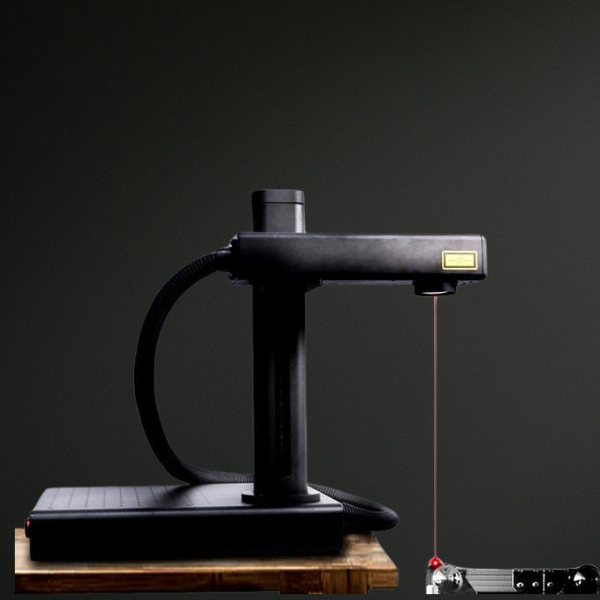Basics of laser engraving machines
What is a laser engraving machine?
A laser engraving machine is a device for marking materials. It uses a laser beam to create precise engravings. The process is contactless, which protects the material. The machines are available in different sizes and performance classes. You can engrave on metal, wood, glass and more. The optimal machine can be selected for each project. It is important to understand the laser and the software. In Germany this helps to find the right model. This means every engraving will be a success.

Different types of laser engravers
There are different types to consider when choosing a laser engraving machine. CO2 laser engravers are popular for non-metallic materials. Fiber lasers are ideal for metals and hard plastics. Crystal laser engraving machines are rarer and more expensive, but offer special capabilities. It is important to choose the appropriate type for your project and material. This allows you to achieve the best results and efficiency at work.
Laser engraving vs. traditional engraving methods
Laser engraving offers many advantages over traditional methods. Here is a comparison:
- Precision: Laser engraving devices work very precisely. They create fine details that are difficult to achieve using manual methods.
- Speed: Laser engraving is faster. The machine engraves in minutes what would previously have taken hours.
- Flexibility: Lasers can engrave on different materials. These include wood, metal, glass and more.
- Cleanliness: No dirt or abrasion. Laser engraving is a clean technique.
- Costs: Even if the purchase is expensive, you save in the long term. There is less tool wear and you don't need special tools for different materials.
Traditional engraving also has advantages such as the handcrafted feel. But in a direct comparison, laser engraving scores with technology and efficiency.
Purchasing advice for laser engraving machines
What you should pay attention to before buying
There are a few things to consider when purchasing a laser engraving machine. Here is a list of important points:
- Budget: Set a clear price range.
- Engraving size: Check the max. working surface of the machine.
- Materials: Make sure the machine can process the materials you want to use.
- Performance: Choose a machine whose performance is sufficient for your projects.
- Quality: Look for machines with good reviews and reliability.
- Support: Make sure the manufacturer offers good technical support.
- Accessories: Find out which extras are necessary or useful.
- Warranty: Check the warranty coverage and duration.
These points will help you find a suitable laser engraving machine.
The importance of laser types and power
When purchasing a laser engraving machine, you must understand that the laser type and power are key factors. There are CO2, fiber and crystal lasers. Each type is suitable for different materials. The power of the laser, measured in watts, influences the cutting depth and processing speed. A higher wattage allows you to engrave thicker materials and work faster. Before you choose a machine, think about what you want to engrave. This will help you choose the right laser specifications for your needs. Make sure the performance is sufficient for your project.
Software and Compatibility
The software plays a key role in the use of laser engraving machines. Make sure the software is user-friendly and supports the formats you want to use. Some laser engraving machines come with their own software, while others are compatible with commercially available graphics programs. Check whether the software works with your operating system, be it Windows, Mac or Linux. Also ensure that regular updates are available to integrate new features and ensure security. Compatibility with other devices such as cameras for positioning aids can also be helpful.
Application examples and materials
Materials that can be processed with a laser engraving machine
Laser engraving machines are very versatile and can process a variety of materials. Here are some of the most commonly engraved materials:
- Metals: These include stainless steel, aluminum, brass and copper.
- Plastics: Acrylic, ABS and polycarbonate are suitable for laser engraving.
- Wood Types: From soft woods like pine to hard oak and mahogany.
- Glass: Can be engraved but requires special techniques.
- Paper: For delicate designs and decorations.
- Textiles: Cotton as well as leather and artificial leather.
- Stone and ceramics: Marble, slate, granite and tiles can be engraved.
This list shows the range of materials that you can refine with a laser engraving machine. Depending on the machine and technology, other materials are possible.
Creative projects and commercial applications
Laser engraving machines can be used in a variety of ways. Whether for personal projects or commercial products, the technology offers endless possibilities. Some creative uses include personalizing jewelry, creating customized gifts, or making signs and decorative items. On a commercial level, laser engraving machines are used to brand items with logos, engrave barcodes and serial numbers, and produce precision parts in industry. These machines offer simplicity, speed and precision, making them an important tool for companies of all sizes, from small workshops to large manufacturing plants.
Tips for optimizing your laser engraving
- Choose the right material. Not all materials are equally suitable for laser engraving.
- Adjust the laser strength. Different materials require different energy.
- Pay attention to the focusing of the laser. A blurry laser can reduce the result.
- Clean the lens regularly. Dirt on the lens can affect the engraving quality.
- Use test runs. Try out settings first to avoid mistakes.
- Optimize the software settings. Pay attention to correct speed and intensity values.
- Hold the workpieces firmly. Avoid movement during the engraving process.
- Check the room temperature. Extreme temperatures can change the material.
- Plan the design carefully. A well-thought-out design saves time and materials.
- Maintain your machine well. Regular maintenance ensures consistent results.










